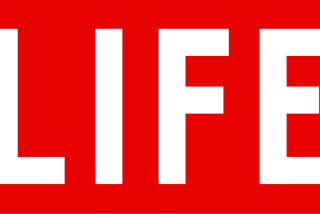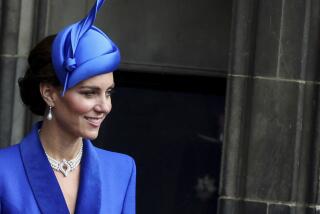The Sun may have set on Britain’s topless Page 3 models
Say “Page 3 Girl” to a Brit, and it can only conjure up one type of image.
A young, attractive woman posing seductively in front of a camera wearing skimpy bikini bottoms and little (or nothing) else.
For more than four decades, these images have had pride of place on the first inside right-hand page of the Sun newspaper, the country’s bestselling tabloid.
The pictures have launched the careers of countless “glamor” models, the most popular of which subsequently went on to become household names, launch successful music careers and even perfume lines.
But the decades-old feature appears to have come to a halt, albeit a rather quiet one for such a risqué and bold tradition.
The Rupert Murdoch-owned Sun has not printed an image of a topless woman on Page 3 since Friday, raising intense speculation in Britain that the infamous era is over.
The news was first broken by the Times of London, also owned by Murdoch’s News Corp., with the headline: “The London Sun’s topless Page 3 girl is covered up after 45 years.”
But the paper itself offered an elusive response to the story, leaving open the possibility that the final chapter in this story has not been written.
“Page 3 will be in @TheSunNewspaper tomorrow in the same place it’s always been -- between page 2 and page 4,” the paper’s spokesman, Dylan Sharpe, wrote cryptically on Twitter.
And this is not to say the paper has entirely stepped away from showing scantily-clad women on Page 3 either, making campaigners say this is only a partial victory.
On Monday, the first day the weekday paper published after the supposed end of the Page 3 Girl, the paper featured an image of model Rosie Huntington-Whiteley wearing lingerie.
Tuesday’s Page 3 showed a large photo of female actors from the popular sitcom “Hollyoaks” running on a beach in bikinis.
A note at the bottom of the page directed readers to the Sun website for images of “Lucy from Warwick,” who is decidedly topless.
The Page 3 Girl phenomenon began in 1970 under editor Larry Lamb, who took a gamble and printed images of a topless 20-year-old model while Murdoch was out of the country.
It was less than one year after Murdoch had taken control of the paper.
Sales started to skyrocket and the nearly nude women are widely believed to have helped the Sun’s sales overtake its rival tabloid the Mirror.
Images of young girls posing with their breasts out in Britain’s bestselling “family” newspaper quickly became ubiquitous, pinned on barbershop walls and ogled by builders at construction sites.
In 1983, Samantha Fox became the youngest Page 3 Girl at 16 and quickly a well-known name, face and body.
A few years later she embarked on a music career and recorded the song “Touch Me (I Want Your Body)” which became a worldwide hit.
Eventually, a change in the law required the models to be 18.
Glamour model Katie Price, also known as Jordan, began her career as a Page 3 Girl and has since launched her own perfume line, written books and frequently appears on reality shows.
In the 1990s, the Sun decided to run only images of women with natural breasts after polling readers.
When Rebekah Brooks took over as the first female editor of the paper in 2003 there was speculation that she might bow to pressure to scrap the Page 3 models.
But on her first day in the job, she showed it was a tradition she fully embraced.
The next day’s Sun featured a topless “Rebekah from Wapping,” the name of the neighborhood where News Corp.’s offices are located in London. The woman in question was model Rebekah Parmar-Teasdale, but readers got the joke.
But as times continued to change, so too did public acceptance.
Clare Short, a Labor Party member of Parliament, introduced a bill at one point to outlaw the topless tradition. It failed.
The politician tried to revive her campaign after Brooks took over the paper, calling the images “degrading pornography,” but the Sun launched a vicious counterattack.
It superimposed Short’s face on a topless model and branded her “fat and jealous” and a “killjoy.”
Yet in recent years, there were small signs that Murdoch, now a powerful international media mogul, might be changing his attitude on the topless women.
“Aren’t beautiful young women more attractive in at least some fashionable clothes? Your opinions please,” he asked his Twitter followers in 2014
He went on: ‘’Brit feminists bang on forever about Page 3. I bet never buy paper. I think old fashioned but readers seem to disagree.’’
Two years ago, a new No More Page 3 campaign was launched by actress Lucy-Anne Holmes. Its online petition amassed 217,000 signatures.
“We are all really delighted,” No More Page 3 campaigner Kathryn Thomson said in an interview Tuesday. “We are not against glamor modeling or sex workers. We just believe there is no place for these images within a family newspaper.”
“A topless woman is not news,” she added.
The development sparked mixed reactions from former Page 3 Girls themselves.
“It’s only a matter of time before everything we do will be dictated by comfy shoe wearing... No bra wearing... man haters,” Rhian Sugden wrote on Twitter.
And former Page 3 model Jodie Marsh, 36, posted a barrage of tweets after hearing the reports: “So-called ‘feminists’ really annoy me. Telling girls they shouldn’t do Page 3 is not being a feminist; women should do whatever they want.
“I loved doing Page 3, it was good money, I felt powerful, I was definitely in control and all the people (mostly women) I worked with were fab.
“I never felt exploited -- in fact the opposite. I thought ‘Blimey, people are willing to pay to see my boobs.’
Prime Minister David Cameron refused to be lured into the debate over Page 3’s apparent demise.
“The PM always thinks that what newspapers publish is a matter for newspapers,” his official spokesman told reporters.
Whether the change will be lasting or not, women and parenting groups who had taken a stance against Page 3 continued to react with cautious optimism.
“This is a hugely positive step for girls and women and shows the difference we can all make when we speak out together,” a statement from Girlguiding said.
“It is impossible for girls to nurture their ambitions if they are constantly told that they are not the same as their male equivalents. This is what Page 3 did. It was disrespectful and embarrassing,” the group added.
And Justine Roberts, the chief executive of parenting website Mumsnet, said her group was “mostly very cheered” by the development.
“Obviously it’s only a partial victory; Page 3 will live on online and the print edition is still carrying scantily clad women on Page 3, albeit in bikinis,” she said. “But for those who lived through the casual and pervasive sexism of the 1970s onwards, it feels like a big symbolic achievement.”
Boyle is a special correspondent
More to Read
Start your day right
Sign up for Essential California for news, features and recommendations from the L.A. Times and beyond in your inbox six days a week.
You may occasionally receive promotional content from the Los Angeles Times.






